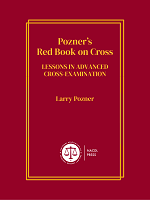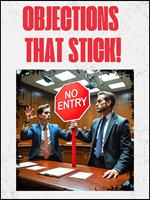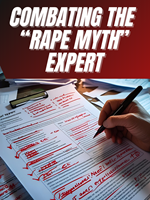This is an outdated version of NACDL’s bylaws, and is available strictly for archival purposes. The version of the bylaws below took effect in August 2019 and was further amended in February 2020. Please consult NACDL’s current bylaws or governance documents for any current governance-related questions.
Table of Contents
- Article I. Name, Seal, Offices
- Article II. Mission, Purposes
- Article III. Meetings, Rules
- Article IV. Membership
- Article V. Officers
- Article VI. Board of Directors
- Article VII. Committees
- Article VIII. Nominations, Elections, Vacancies
- Article IX. Affiliate Associations
- Article X. Fiscal Year
- Article XI. Finances
- Article XII. Dissolutions of Assets
- Article XIII. Bylaws Amendments
Article I. Name, Seal, Offices
Section 1: Name
The name of this organization is the “National Association of Criminal Defense Lawyers, Inc.”
Section 2: Seal
The seal of this Association shall be that which is affixed to these Bylaws.
Section 3: Offices
The Association may have offices at such place as the Board of Directors may from time to time appoint.
Article II. Mission, Purposes
Section 1: Mission
NACDL's mission is to serve as a leader, alongside diverse coalitions, in identifying and reforming flaws and inequities in the criminal justice system, including systemic racism; and to equip the criminal defense bar to provide the highest quality representation to ensure justice and due process for persons accused of crime.
Section 2: Objectives and Purposes
The Association envisions a society where all individuals receive fair, rational, and humane treatment within the criminal justice system. The Association pursues this vision through charitable, scientific, educational and legislative endeavors including, without limitation, the following:
(a) The promotion, study, and research in the field of criminal defense law and procedure and constitutional law;
(b) The dissemination by lecture, seminars and publications such theories, technologies and techniques that support or promote the field of criminal defense advocacy;
(c) The sponsorship of periodic meetings of the criminal defense bar; to provide a forum for the exchange of information regarding the administration of criminal justice; and thereby to protect individual rights and improve the practice and procedures of criminal law;
(d) Representing the Association before the legislative, executive and judicial bodies which determine policy for the state and federal governments in a manner that promotes the mission of the Association and its objectives and purposes; and
(e) The preservation, protection, and defense of the adversary system of justice and the Constitution.
The National Association of Criminal Defense Lawyers believes that continued recognition and adherence to the Bill of Rights by the Judicial, Legislative, and Executive branches of government are necessary to sustain the quality of the American system of justice.
Article III. Meetings, Rules
Section 1: Rules of Meetings
All Membership and Board of Directors Meetings shall be conducted in accordance with Robert’s Rules of Order, unless otherwise provided herein. All Executive Committee and Article VII Committee Meetings may be conducted in accordance with Robert’s Rules of Order, upon proper motion.
Section 2: Construction
These Bylaws shall be strictly construed in favor of the objectives, purposes and policies of the Association.
Section 3: Meetings Defined
As used herein, Membership Meetings refer to the Annual Meeting and Midwinter Meeting of the Association. Board of Directors Meetings, Executive Committee and Committee Meetings refer to those meetings specifically organized and called in accordance with the enumerated sections set forth herein.
Section 4: Time and Place
The Membership and Board meetings of the Association shall be held at such time and place as may be fixed by the Board of Directors. Committee meetings shall be held at such location as the Board meetings, and at such times fixed by the Committee Chair. Committees may meet at other times and places as designated by the respective committee chair(s).
Section 5: Quorum for Membership Meetings
Those Members who are eligible to vote and are present at any membership meeting of the Association shall constitute a quorum for the transaction of business at said meetings.
Section 6: Quorum and Majority for Board Meetings
(a) The number necessary to constitute a quorum for the transaction of Association business at a Board Meeting is governed by Robert’s Rules of Order. In order to determine a quorum for Board of Directors Meetings, past presidents in attendance shall not be counted.
(b) For the purpose of determining the majority vote at a Board of Directors Meeting, all past presidents of the Association, however, shall be eligible to vote as long as they are current voting members whose yearly dues are paid.
Section 7: Meetings
The Board of Directors shall meet after Membership Meetings of the Association at the site of the Membership Meetings. There shall be at least one other regular Board Meeting during the year at a location approved by the Board of Directors. Special meetings may be called at any time by the Board of Directors upon written consent to time and place by a majority of the members of the Board or by call of the President.
Article IV. Membership
Section 1: Membership Categories
The Board of Directors will define categories and associated voting rights for the membership of this Association. Admission into each category shall be subject to the eligibility requirements of Article IV, Section 2, the admission procedures of Article IV, Section 2, and any additional requirements defined by the Board of Directors for the category of membership sought. Voting privileges will be limited to attorneys who are members of the bar in good standing, or who have voluntarily elected inactive or retired status. The Board of Directors shall not define a membership category that extends voting privileges to individuals employed exclusively as government prosecutors.
Section 2: Admission to Membership
All applications for Membership shall be made in writing and are subject to the approval of the President or the Executive Director, or a designee of either. An appeal from a rejection of membership shall be had by the applicant to the Board of Directors at the next regularly-scheduled Board of Directors Meeting. On said appeal, the Board of Directors may approve the application by majority vote if the candidate meets the eligibility criteria prescribed for the category of membership that the applicant seeks. The Board’s decision on an appeal is final. An unsuccessful applicant may file a new application after one year has elapsed from the rejected application.
Section 3: Voting
Each voting Member shall be entitled to vote at the Association’s meetings and in the Association’s elections and be entitled to sign nominating petitions, provided their dues are currently paid.
Section 4: Revocation of Membership
Membership of all categories may be revoked for cause by vote calling for such revocation by three-quarters (3/4) vote of the voting membership of the Association in attendance at the Membership Meetings. Any amendment to the Bylaws that would terminate all Members or any category of membership or redeem or cancel all memberships or any category of memberships must meet the requirements of the Bylaws regarding amendment and this section.
(a) Before adopting a resolution proposing such an amendment, the Association shall cause to give notice of the general nature of the amendment to its Members.
(b) Any opposition to the resolution shall include written commentary not exceeding one thousand (1000) words opposing the amendment submitted by the category of membership sought to be revoked, provided such statement is submitted by members having three percent or more of the voting power. Such statement shall be submitted by one member of the category sought to be revoked. Said statement shall be submitted not later than twenty (20) days after the Board has voted to submit such amendment to the membership for approval or rejection. Said commentary shall be published in an Association publication.
Section 5: Resignation
(a) Any Member of the Association may resign from any category of membership. Such resignation may be written and may be accompanied by a brief statement stating the reason therefore. Resignation is effective when received by the Executive Director, unless the notice specifies a later effective date.
(b) A Member is deemed to have resigned by becoming a prosecutor in any local, state or federal office or by working in any other capacity which is in conflict with the Objectives and Purposes of the Association, as set forth in Article II of these Bylaws. Any Member who accepts an appointment as a temporary prosecutor or as a temporary police legal advisor is not deemed to have resigned from this Association by the acceptance of the appointment. However, should the Member wish to remain as a Member of this Association, that Member shall, within thirty (30) days of accepting the appointment, apply for a waiver of the provisions of this Section. The request for waiver shall be in writing and forwarded to the Executive Director for immediate distribution to the Executive Committee and the Board of Directors. The request shall state general information about the appointment but must be specific as to the date of the beginning and anticipated date of termination of such temporary appointment. The statement shall likewise include a representation by the applicant that any prosecutorial conduct will be confined to the specific case for which the temporary appointment is made and will be conducted in a manner that can in no way be construed as being in conflict with the objectives and purposes of this Association. In considering the request for a waiver under this Section, the members of the Executive Committee and the Board of Directors shall consider whether the appointment is inconsistent with the Objectives and Purposes of this Association as set forth in Article II of these Bylaws. If no request for a waiver is received by the Executive Director within thirty (30) days of the acceptance of the appointment, the Member shall be deemed to have resigned from this Association as of the date of the acceptance of the appointment.
(c) Any dispute regarding eligibility under this section shall first be referred to the Executive Committee for majority vote. An appeal shall be perfected to the Board of Directors. Any Member resigning shall not be entitled to any refund of any dues paid to the Association.
Section 6: Definition: Current Membership
A Member is considered current provided his/her dues are paid by the last day of his/her anniversary month; however, once the dues are paid, the Member becomes current.
Article V. Officers
Section 1: Designation
(a) The elected officers of the Association shall consist of President-Elect, First Vice-President, Second Vice-President, Treasurer and Secretary. The President is designated an Officer of the Association.
(b) The Immediate Past President is designated an Officer of the Association, and shall serve as Ombudsman. Should the Immediate Past President be unable to serve as Ombudsman, a substitute Ombudsman shall be appointed by the President. Such person shall be a past president of the Association. Election to office shall be only by eligible voting Members of the Association.
(c) In addition to the elected Officers and the designated Officers of the Association, a Parliamentarian may be appointed by the President at the regular Board Meeting held immediately following the Annual Membership Meeting of the Association. The Parliamentarian shall assist the Board of Directors and the Executive Committee in the interpretation and resolution of parliamentary issues under Robert’s Rules of Order and perform such other duties as may be prescribed by the President and/or the Board of Directors. Notwithstanding any other provision of these Bylaws, the Parliamentarian shall not be an Officer or a member of the Board of Directors. The Parliamentarian shall not serve as either an Officer or a Board of Director’s member during his/her term. The Parliamentarian shall have no vote nor be counted for quorum purposes at meetings of the Board of Directors and/or the Executive Committee.
(d) The officers of the Association shall be ex officio members of the Board of Directors and have voting privileges.
Section 2: Qualifications
Only Members authorized to vote shall be eligible to become elected officers of the Association. Eligibility for election to office in the Association shall extend to all voting categories of Membership only.
Section 3: Election and Term of Office
(a) Elected Officers: Elected Officers of the Association shall be elected by the procedures set forth in Article VIII of these Bylaws, and shall hold that office until the next Annual Membership Meeting or until their successors are elected, except for the President-Elect as provided for in subsection (3)(b) and the Treasurer as provided for in subsection 3(c) of this article.
(b) President-Elect: At the end of the term of the President, the President-Elect shall automatically become President of the Association and shall serve as President for one (1) year in addition to any period of time necessary to fulfill the unexpired term of his or her predecessor who may have died, resigned or been removed from office.
(c) The term of Treasurer shall be for a period until the second Annual Membership Meeting following his or her election at the Annual Membership Meeting. During that two-year period, the Treasurer shall be ineligible for any other Officer or Director position.
(d) In no event shall a Treasurer elected by the membership be re-elected after two (2) consecutive complete two (2) year terms within one (1) year of completion of said service. This limitation of service shall apply to the Treasurer position commencing with the Annual Membership Meeting in 2012.
Section 4: Removal
In addition to the provision of Section 5 of this Article, an Officer may be removed for cause by a vote calling for such removal by a three quarters (3/4) vote of the Board of Directors.
Section 5: Absence
An Officer shall not accept the position unless that person intends to attend all Executive Committee, Board and Membership Meetings except for illness, serious personal and/or professional difficulties or official court business. In the event of anticipated absence, an officer shall request in writing that he or she be officially excused by the President at any time prior to the call to Order of a meeting requiring their attendance. Failure to obtain a presidential excuse twice during that Officer’s term shall be an automatic forfeiture of the office. The office shall be declared vacant by the President at the next regularly scheduled Board of Directors Meeting and the unexpired term shall be filled by a voting Member of the Association who receives the majority vote of the Board of Directors, in accordance with the procedures established in Article VI, Section 6(b). The approved minutes of the Board of Directors shall create a rebuttable presumption of correctness that any absence of any officer is excused or unexcused.
Section 6: Duties of Elected Officers
The duties and powers of the elected Officers of the Association shall be defined by the Board of Directors upon recommendation of the Nominating Committee.
Section 7: Executive Director
The Executive Director shall be the Managing Officer of the Association and it shall be the Executive Director’s responsibility to implement the policies, objectives and purposes of the Association as directed by the Executive Committee, Board of Directors and/or the voting membership. Within limits defined by the policies of the Board of Directors, the Executive Director shall be empowered to take all of the day-to-day actions and make all of the day-to-day discretionary decisions which are deemed necessary for the achievement of the goals, purposes and objectives of the Association.
The Executive Director shall: (1) have discretion to employ, supervise, or dismiss the subordinate employees of the Association; (2) organize and facilitate the Membership Meetings and all regularly scheduled meetings of the Board of Directors; (3) regularly report to the President and/or the Board of Directors, the Executive Committee, and/or the general membership regarding issues of importance to the Association.
Section 8: Vacancies
In the event that an officer or Officer-Elect, other than the President, is incapable of serving and will remain incapable for a substantial period of the remaining term, such person shall be deemed to have created a vacancy. The determination of such vacancy shall be made by a three-quarters (3/4) vote of the voting members of the Board of Directors present at a scheduled meeting. Upon such determination, the vacancy so created shall be filled pursuant to the provisions of Article VI, Section 6(b) of these Bylaws.
Section 9: Voluntary or Involuntary Leave of Absence of the President
a) In the event the President finds herself or himself unable to fulfill the duties of her or his office, the President may choose to take a leave of absence. In that event, the Executive Director shall notify the Board of Directors within five (5) business days, shall post an announcement on the Association’s Web site, and shall place an announcement in the next edition of the Association’s magazine. The length of the leave of absence shall be determined by the President.
(b) In the event the President is unable to exercise the duties of his or her office, and the President does not take a leave of absence, the Executive Committee may determine that a leave of absence is appropriate and necessary and may place the President on an involuntary leave of absence. The determination whether the condition for an involuntary leave of absence has been met shall be made by a three-quarters (3/4) vote of the full Executive Committee. Notice of the Executive Committee determination placing the President on an involuntary leave of absence, with a statement of the reasons, shall be given to the full Board of Directors by electronic mail within five (5) days of the determination. Within ten (10) days after notice has been given, the Directors shall respond, either ratifying or disapproving of the involuntary leave of absence. If the involuntary leave of absence is not ratified by three-quarters (3/4) of the full Board, it shall be null and void.
(c) During the period of the President’s leave of absence, his or her duties shall devolve to the President-Elect, who shall serve as Acting President.
(d) The involuntary leave of absence may be lifted at any time by a majority vote of the full Executive Committee.
(e) At any time while the involuntary leave of absence is in effect, the President may ask the Executive Committee to lift the involuntary leave of absence. In that event, the Executive Committee shall have five (5) business days to consider and act upon the request. The involuntary leave of absence shall be lifted by a majority vote of the full Executive Committee. If the Executive Committee denies or fails to act upon the request within five (5) business days, the President may appeal to the full Board. The Executive Director shall transmit the President’s appeal to the full Board by electronic mail and the Directors shall respond within ten (10) business days. The involuntary leave of absence shall be lifted upon a vote of a majority of the full Board.
Article VI. Board of Directors
Section 1: Qualifications
All Members of the Association who are authorized to vote are eligible to become members of the Board of Directors by election.
Section 2: Number of Members
The Board of Directors shall consist of thirty-five (35) elected Members of the Association (as defined in Section 1); four (4) representatives from the Affiliate Associations (as defined in Article IX); and the Officers of the Association as designated in Article V of these bylaws, who shall be ex officio members of the Board of Directors and have voting privileges.
Section 3: Powers
The Board of Directors shall manage the business and affairs of the Association. Unless otherwise provided herein, any act of a majority of the voting members present at a meeting shall be the act of the Board of Directors.
Section 4: Term of Office
Members of the Board of Directors elected by the membership shall be elected in accordance with Article VIII and hold office for a period of three (3) years. The representatives from the Affiliate Associations shall be selected in accordance with the Standing Board Policy on Affiliate Representatives and those selected in 2003 and thereafter shall hold office for a period of three (3) years.
Section 5: Limitation of Service
In no event shall a Director elected by the membership or selected by the Affiliated Associations be reelected after two (2) consecutive complete three (3) year terms within one (1) year of completion of said service. The limitation of service shall apply to representatives selected by the Affiliated Associations in 2003 and thereafter.
Section 6: Absence, Incapacity, Vacancy, Reinstatement
(a) A Director shall not accept office unless that person intends to attend all Board meetings except for illness, serious personal and/or professional difficulties or official court business. In the event of anticipated absence(s), the Director shall request to be officially excused by the President at any time prior to the Call to Order of a meeting requiring their attendance. Such request shall be in writing. Failure to obtain a presidential excuse twice during that Director’s term shall create a vacancy in that Director’s Board seat. The approved Minutes of the Board of Directors Meetings shall create a rebuttable presumption of correctness that any absence of any director is excused or unexcused. The position shall be declared vacant by the President at the next regularly scheduled Board of Directors Meeting. Prior to filling the vacant Board seat, a Director who contests the vacancy must petition the remaining Board and the Officers for reinstatement, as more fully set out in Section 7, herein.
(b) The unexpired term of a Director that becomes vacant shall be filled by a qualified Member as defined in Article VI, Section 1 of these Bylaws. The qualified Member of the Association who receives the majority vote of the Board of Directors shall be elected to fill the unexpired term of the vacant seat. When the existence of a vacancy is declared by the President, the Executive Director shall promptly notify the membership of the Board of Directors. The Board of Directors shall fill the vacancy at the first scheduled meeting of the Board of Directors following the declaration of a vacancy. Election rules and procedures will be proposed by the Elections Committee for consideration and adoption by the Board preceding each election held under this section. The unexpired term of a Director who is a Representative from the Affiliate Associations shall be filled according to the Standing Board Policy on Affiliated Representatives.
(c) In the event that a Director, and/or Director-Elect is incapable of serving and will remain incapable for a substantial period of his or her term, such person shall be deemed to have created a vacancy. The determination of said vacancy shall be made by a majority of the voting Members of the Board of Directors present at a scheduled meeting. A vacancy so created shall be filled subject to the provisions of Article VI, Section 6(b) of these Bylaws.
Section 7: Contested Vacancy, Procedure
In the event a seat on the Board of Directors has been declared vacant, the following procedures shall govern where the Board Member contests his vacancy:
(a) The Secretary shall notify the person by certified United States Mail of the vacancy on the Board of Directors. A written petition for reinstatement and request for personal appearance must be submitted to the National Office within thirty (30) days from the date the notice was mailed.
(b) Copies of the written petition shall be transmitted to the entire Board of Directors. The petitioner will have the burden of proof to show: 1) good cause why the petitioner is entitled to reinstatement; or 2) good and just excuse(s) for the petitioner’s absences and failure to obtain presidential excuses.
(c) The Board of Directors shall vote to reinstate or to uphold the vacancy. The majority vote of the Board of Directors shall be final.
Section 8: Removal
A Director may be removed for cause by a vote calling for such removal by three-quarters (3/4) vote of the Members of the Board of Directors.
Section 9: Resignation
A Director may resign at any time by providing written notice to the Executive Director. If a resignation of a Director is made effective at a later date, the Board may fill the pending vacancy in accordance with the procedures set forth in the Bylaws before the effective date if the Board provides that the successor does not take office until the effective date.
Article VII. Committees
Committees:
The Association shall have Standing Committees. The Standing Committees are: Audit, Budget, Bylaws, Elections, Executive, Investment and Nominations.
Section 1: Composition
Committees shall consist of volunteers appointed by the President from all Article IV membership categories.
Section 2: Rules
All committee procedures, except as provided in these Bylaws, may be governed by Robert’s Rules of Order as provided in Article III, Section 1. Only members of a committee appointed by the President as set forth in Article V, Section 6(a) shall vote on any committee matter. Any Officer or Director appointed by the President as set forth in Article V, Section 6(a) as liaison to a committee shall have a vote on any business of the Committee.
Section 3: Committee Reports
All committee chairs shall file a timely written report before each scheduled Board Meeting for distribution to the Board of Directors.
Section 4: Executive Committee
(a) Purpose and Composition: The purpose of the Executive Committee shall be to act on Association business and transactions during the interim period between Board of Directors Meetings. The Executive Committee shall meet as necessary and may meet by telephonic or other electronic transmission to manage the business of the Association. The Executive Committee shall consist of the President, President-Elect, First Vice-President, Second Vice-President, Treasurer, Secretary, Immediate Past-President, and three members of the Board of Directors as identified in section 4(d) of this article. In the event of a vacancy in the office of Executive Director, the Executive Committee or its designee(s) shall be charged with the duty of reviewing applications for the position of Executive Director of the Association and shall make a recommendation to the Board of Directors to fill the vacancy.
(b) (1) In the event of a vacancy in the office of Executive Director, the Executive Committee, or its designees, shall conduct a search for a replacement and review applications for the position of Executive Director of the Association.
(2) The Executive Committee shall recommend in writing a candidate to the Board of Directors no less than 3 days before the meeting of the Board at which the recommendation will be made. The Executive Committee shall simultaneously provide the Board of Directors with the curriculum vitae of the recommended candidate and other supporting materials submitted by the candidate. Such written report shall not include any financial data provided by the candidate nor shall it include any information regarding any financial negotiations conducted by the Committee or its designees. Such materials shall be treated as if the Board were in Executive Session.
(3) The Executive Committee, if it requires Board approval prior to the next regularly scheduled Board Meeting, may convene an emergency Board Meeting by telephone conference. The telephone conference shall be held at least 3 days after delivering its recommendation and the written materials to the Board by electronic mail or facsimile.
(4) In the event a vacancy arises in the office of the Executive Director that necessitates the immediate naming of an Executive Director to prevent harm to the Association, as determined by the President, the President, upon approval of the Executive Committee, shall designate an interim Executive Director. Said appointment shall be effective until the permanent Executive Director assumes his or her office in accordance with Article VII, Section (4)(a) above.
(c) The Executive Committee shall annually review the performance of the Executive Director and determine if performance is consistent with the terms of the employment contract entered into by the Association with the Executive Director. If a finding is made by majority vote of the Executive Committee that the contract of the Executive Director should be terminated for cause or otherwise, the Executive Committee shall forward its determination to the Board of Directors for its approval, or disapproval. A determination to terminate shall be made by a majority vote of the Board. Any extension or renewal of the Executive Director’s contract shall be executed by the President, upon advice and consent of the Executive Committee, on behalf of the Association.
(d) Board Representatives:
(1) Number and Term: Notwithstanding any other provisions of these Bylaws, three Board Representatives shall be appointed to the Executive Committee by the Board of Directors. Board Representatives shall serve staggered three-year terms and shall be non-officer members of the Board of Directors.
(2) Selection: At each Annual Board Meeting, the newly installed President shall nominate a member of the Board of Directors to serve as a Board Representative. Each incoming President, prior to being installed as President, shall announce his or her nomination to the Board of Directors. A member of the Board of Directors may nominate himself or herself or another member of the Board of Directors to serve as Board Representative. Board Representatives shall be appointed by a majority vote of all members of the board of directors then in office. At least one Board Representative shall be a first term Board Member and at least one Board Representative shall be a second term Board Member. The President and Board of Directors shall endeavor to assure minority and gender representation on the Executive Committee.
(3) Vacancy: The remainder of an unexpired term of a Board Representative that becomes vacant shall be filled by a non-officer member of the Board of Directors. The existence of a vacancy shall be declared by the President, and the vacancy shall be filled at the next scheduled meeting of the Board of Directors by a majority vote of those members of the Board of Directors then in office. The President shall nominate a member of the Board of Directors to fill the vacant term, and members of the Board of Directors may nominate themselves to fill the vacant term.
(4) Effective Date and Initial Selection of Board Representatives: This section as amended shall take effect for selection of Board Representatives beginning with the 2019 Annual Meeting. Three Board Representatives shall be appointed at the 2019 Annual Board Meeting; one each to terms of one, two, and three years. The incoming President shall announce the nominees for all three positions prior to being installed as President at the 2019 Annual Membership Meeting.
(e) The Executive Committee shall meet in person at least five times per year. The Executive Committee shall meet as necessary on other occasions telephonically or by other electronic transmission to manage the business of the association.
Section 5: Nominating Committee
The Nominating Committee shall consist of nine (9) members of the Association. No member of the Nominating Committee shall be a candidate for any Officer or Board of Director position during the period of his or her service on the Nominating Committee. A nonvoting member shall not be eligible to serve on the committee.
a) Duty: The duty of the Nominating Committee shall be to recruit and to (1) define the duties of Directors and Officers of the Association, subject to approval by the Board of Directors; and (2) to nominate candidates for election as Directors and Officers of the Association. The Nominating Committee shall only recruit and nominate qualified candidates who are aware of, understand, and are reasonably likely to discharge the duties of the of an officer or director. The Nominating Committee will endeavor to assure diversity of representation among the Federal Judicial Circuits whenever practicable, by nominating candidates to assure that there will be a minimum of two Directors representing each such Circuit. The Nominating Committee shall likewise consider a candidate’s years of membership and service to the Association and the profession while endeavoring to assure minority and gender representation on the Board of Directors. Each year, the Nominating Committee shall review and adopt guidelines for its operation.
b) Term: Notwithstanding any other provisions of these Bylaws, members shall be appointed to three-year terms. Initially, following the Annual Membership Meeting in 2011, three members of the Nominating Committee shall each be appointed to terms of one, two, and three years. Subsequently, each President shall appoint members of the Nominating Committee to fulfill expired terms. Each President’s appointments shall include at least one Past President of the Association. Whenever practicable, the President shall endeavor to ensure that there be no more than one (1) member of the Nominating Committee from each Federal Judicial Circuit. In the event of a vacancy on the Nominating Committee, the President shall appoint a replacement to fulfill the unexpired term in consultation with the Nominating Committee Chairperson(s). In no event shall a member of the Nominating Committee be re-appointed after two (2) consecutive complete three (3) year terms within one (1) year of completion of said service. Nothing in this provision shall in any way affect the powers of the president as enumerated in Article V, Section 6(a) of these bylaws.
(c) Notice: The Nominating Committee shall notify the Executive Director, in writing, no less than seventy-five (75) days before the date of the Annual Membership Meeting of the Association, of the names of its candidates. Within one week of receipt of the names of the candidates of the Nominating Committee, the Executive Director shall notify each member of the names of the Nominating Committee’s candidates and shall post such names on the Association’s Web site. The Executive Director shall, within one month of receiving the list of nominated candidates, specify a deadline for the receipt of nominating petitions, in an Association publication sent to each voting member. The notice shall include the names of the candidates nominated by the Nominating Committee.
Section 6: Elections Committee
The President shall appoint an Elections Committee of no less than five (5) Members, four Members from different Federal Judicial Circuits, and one Member of the Bylaws Committee. The Elections Committee shall supervise the conduct of the elections and provide guidance of the elections to the Executive Director. Any dispute regarding the elections, ballots or procedures, will be referred to the Elections Committee, whose duty it shall be to maintain a written record of the dispute and its decision thereon, setting forth the reasons for its decision. Such record shall be provided to the Board of Directors at the next Board of Directors Meeting. Any adverse decision of the Elections Committee may be appealed to the Board of Directors at its next meeting, whose decision shall be final.
Section 7: Budget Committee
Upon installation in office, the President-Elect shall appoint a Budget Committee comprised of the Treasurer, as chair, Secretary, First Vice President, Second Vice-President, the President-Elect, the incoming chair of the Continuing Legal Education Committee, and two Board representatives appointed by the President-Elect. The Board representatives appointed shall not be the same as the Executive Committee representatives elected under Article V, Section 8 (c). The President may appoint an additional at-large member of the Budget Committee who shall be a voting member of the association and who shall accept and be subject to the same fiduciary obligations as a member of the Board of Directors.
The Budget Committee shall develop and recommend a budget for the Association no later than 30 days prior to the start of the fiscal year. The proposed budget shall then be presented to the Executive Committee for action prior to the start of the fiscal year, and thereafter, to the Board of Directors at its next regular meeting. In the event the next regular meeting of the Board of Directors does not occur prior to the start of the fiscal year, the Executive Committee shall adopt a provisional budget, subject to amendment without limitation by the Board of Directors at its next regular meeting. It is the duty of the Board of Directors to approve a final annual Association budget.
The Budget Committee shall consider and make recommendations to the Board of Directors regarding any amendments to the Association’s approved annual budget subsequent to its adoption in accordance with the provisions of Article XI, Section 3.
Section 8: Bylaws Committee
The President shall appoint a committee whose function is to ensure that amendments to the Bylaws are properly made. The Bylaws Committee shall have as its members at least one member who shall be from the Executive Committee; one member of the committee shall be from the Elections Committee; and one member of the committee shall be from the Board of Directors.
Section 9: Audit Committee
(a) Purpose. The Audit Committee shall provide oversight of the Association’s financial practices, internal controls, financial management and standards of fiscal conduct. It shall be responsible for (1) reviewing financial statements, (2) reporting to the Board of Directors that financial statements accurately reflect the Associations financial condition, (3) determining the adequacy of internal controls surrounding financial information systems, and (4) ensuring adherence to the Association’s conflict-of-interest policy. The committee shall meet with the outside auditor at least twice each fiscal year – once pre-audit and once post-audit – and at such other times as necessary to fulfill its fiduciary obligations or as directed by the Board of Directors or its Executive Committee. The committee shall keep the Board of Directors and the Executive Committee informed of the fiscal yearly audit status.
(b) (1) Composition. The Audit Committee shall consist of no fewer than five members, the majority of whom shall be current Board members. Notwithstanding any other provisions of these Bylaws, appointments to the Audit Committee shall be made by the president, with the consent of the Board of Directors at the first Board meeting following the Annual Membership Meeting. Notwithstanding any other provisions of these bylaws, the Audit Committee shall annually choose its chairperson.
(2) Notwithstanding any other provisions of these Bylaws, members shall be appointed to renewable five-year terms. Initially the appointment of terms shall be: 1 year, 2 years, 3 years, 4 years, and 5 years.
(c) Rules and Regulations. Any rules and regulations promulgated by the committee shall be submitted to and approved by the Board of Directors.
Section 10: Investment Committee
(a) Purpose. The Investment committee shall develop and implement investment policies, investment ratios and oversee the investment advisors and managers so as to preserve the Associations capital and increase it in a prudent manner.
(b) Composition. The committee shall consist of no fewer than five (5) members, the majority of whom shall be current Board members. No member of the Investment Committee shall be a member of the Budget Committee or the Audit Committee.
Section 11: Governance Committee
The President shall appoint a Governance Committee. The Governance Committee shall biennially present its report and recommendations to the Board of Directors regarding the size and composition of the Board of Directors.
Article VIII. Nominations, Elections, Vacancies
Section 1: Membership Nominations
Any member qualified to vote may be nominated as a candidate for any Officer or Director position. A member may be nominated by one of three means: a) By the Nominating Committee, as set forth in Article VII, Section 5(a); b) Any Member of the Association qualified to vote may nominate by petition any other Member qualified to hold office; or c) Any Member qualified to vote may nominate by petition himself or herself.
Section 2: Qualifications of Candidate
(a) Only Members with voting rights may be candidates. No member shall run for election for the Board of Directors who is, in the same election year, a candidate to be a Representative on the Board of Directors from an Affiliate Association. Only a voting Member whose dues are current at the time of his or her candidacy may be a candidate. The Executive Director shall have the responsibility of determining if the dues are current.
(b) Candidates who are self-nominated or nominated by another Member must forward to the Executive Director a written petition signed by at least thirty (30) Members who are qualified to vote, and whose dues are current at the time of the signature on the petition. The burden of determining that the signatories are qualified remains upon the candidate. It is a further qualification that at least ten (10) signatories of the requisite thirty (30) signatories be from the Federal Judicial Circuit of the candidate. The candidate shall be responsible for obtaining a form prescribed by the Elections Committee and insuring the accuracy of the representations of the candidate. A candidate shall not be disqualified for submitting a form not prepared by the Election Committee, if otherwise in compliance with these Bylaws.
(c) The Executive Director shall make available to the membership the form prescribed by the Elections Committee for a candidate for office. The Executive Director shall cause the form to be prominently displayed and available at all seminars and meetings of the Association for three months commencing in February of each year. The Executive Director shall publish the availability of election forms in an Association publication at least once a year. The Executive Director shall provide notice of this Article in an Association publication. The Executive Director shall advise each Petitioner as soon as reasonable whether the Petitioner has qualified for the ballot. The Executive Director shall, upon receipt of a valid, timely petition, promptly notify, in writing, each candidate previously nominated by the Nominating Committee of such petition.
(d) The procedures for election to office shall be determined by the Executive Director in conformity with Section 7 herein.
Section 3: Voting
(a) Members shall have an opportunity to vote using either a written ballot or electronicallly. Except as provided in subsection (b) of this section, written or electronic ballots shall be [mailed] distributed to Members who are eligible to vote and whose dues are current. The [mailing] distribution of such ballots shall occur no later than thirty (30) days prior to the Annual Membership Meeting of the Association. [Ballots] Votes, to be valid, must be received by the Executive Director from the Members by the published deadline for the receipt of ballots. Each Member who is eligible to vote and whose dues are current shall be entitled to one vote for each contested race. A plurality of votes cast shall elect. The President shall announce the voting results at the Annual Membership Meeting of the Association.
(b) In the event no nominations in addition to those made by the Nominating Committee are received by the date fixed by the Executive Director pursuant to Section 4 of this Article, no ballots shall be distributed. At the Annual Membership Meeting, the Secretary shall declare the candidates of the Nominating Committee elected by acclamation.
Article IX. Affiliate Associations
Section 1: Other Associations
The Board of Directors may establish procedures by which other voluntary bar associations may affiliate with this Association.
Section 2: Qualifications of Affiliate Associations
To be eligible to become an Affiliate Association, a voluntary bar association must:
(a) Be comprised of persons of professional competence, integrity and good moral character who are actively engaged in the defense of criminal cases, and who would otherwise qualify for Membership in this Association.
(b) Have objectives and purposes, as part of its own Bylaws or operating rules, which are consistent with the Bylaws, objectives, and purposes of this Association, as determined by the Board of Directors.
(c) Not accept or allow members who are employed by any city, state or federal government or other entity as a prosecutor of the criminal law, or who work in any other capacity which is in conflict with the objectives and purposes of the Association. Notwithstanding this provision, affiliate associations may accept or allow members who accept an appointment as a temporary prosecutor or as a temporary police legal advisor, so long as their acceptance of that position is not inconsistent with the Objectives and Purposes of this Association as set forth in Article II of these Bylaws. This provision shall not place a more restrictive membership requirement on Affiliate Associations than the Association places on itself under Article IV, Section 16 of these Bylaws.
Section 3: Application for Affiliation
(a) Voluntary bar associations may request affiliation with this Association by submitting an application, on a form available from the National Office, to the Executive Director.
(b) An application for affiliation shall be referred by the Executive Director to the Council of Affiliates, which shall review it and make a recommendation for approval or denial to the Board of Directors.
(c) Approval or denial of an application for affiliation shall be by majority vote of the Board of Directors.
Section 4: Rights and Privileges of Affiliate Associations
(a) The Board of Directors of this Association may, by a majority vote, grant such rights and privileges to Affiliate Associations as it deems necessary and proper, but said rights and privileges shall be no greater than that contained within the Bylaws of the Association.
(b) Any rights and privileges granted to Affiliate Associations shall be reduced to writing as a Standing Board Policy, and shall be made available to any Member or Affiliate Association upon request.
Section 5: Revocation of Affiliation
Affiliate Association status may be revoked after due notice and opportunity to be heard, for cause, by three quarters (3/4) majority vote of the Board of Directors at any lawfully called meeting.
Section 6: Contested Revocation, Procedure
In the event an Affiliate Association is revoked for cause, the following procedures shall govern if the Affiliate Association contests its revocation:
(a) The Secretary shall notify that association of its revocation by certified United States Mail. A written petition for reinstatement and request for personal representative appearance must be submitted to the National Office within thirty (30) days from the date the notice was mailed.
(b) Copies of the petition shall be transmitted to the Board of Directors. The matter will be remanded to the President or his designee to conduct an inquiry, in which the petitioner will have the burden of proof to show good and just cause why the petitioner is entitled to reinstatement.
(c) The President shall forthwith prepare and file a report to the Board of Directors, with a non-binding recommendation for sustaining the petition or rejecting the petition.
(d) The Board of Directors shall vote to reinstate or to uphold the revocation. A three-quarters (3/4) vote of the Board of Directors shall be final.
Article X. Fiscal Year
The fiscal year of the Association shall be established by majority vote of the Board of Directors and need not be changed unless generally required.
Article XI. Finances
Section 1: Annual Dues
Upon recommendation by the Executive Committee, and passed by majority vote of the Board of Directors, the annual dues of all categories of Membership may be changed at any Board Meeting.
Section 2: Payment of Dues
(a) New Members: Individuals whose membership has lapsed, or individuals who join the Association for the first time for any category of membership are New Members for one year. Dues are payable upon tendering of an application for Membership and its acceptance.
(b) Other Members: Individuals who are not New Members and remain within any category of membership are other Members. Dues, therefore, are payable upon receipt of the annual dues invoice.
Section 3: Budget Revisions
Once the Board has approved an annual budget, any request for additional or revised funding, made at a Board meeting or otherwise, shall be deemed out of order and shall not be acted upon unless such request has first been submitted to the Budget Committee with sufficient advance opportunity to permit the Committee to convene and deliberate thereon, and to recommend its approval, disapproval or modification. Upon due consideration by the Budget Committee, such funding request — accompanied by the recommendations of the Budget Committee — would be in order for consideration by the Board of Directors at its next scheduled meeting; provided, however, that if, at any time, an emergency situation is declared by a two-thirds vote of the Board, the requirement for prior Budget Committee consideration of any such additional funding request may be superseded. Any such revision shall be deemed an amendment to the approved budget and itself require a two-thirds vote of the Board.
Article XII. Dissolution of Assets
In the event this Association should dissolve, its physical assets shall be sold and, along with its liquid assets, shall be distributed to a not for profit organization whose primary objectives are the furtherance of criminal justice. Said distribution shall be determined by a majority vote of the Board of Directors then in office.
Article XIII. Bylaws Amendments
Section 1: Notice
These Bylaws may be amended by a majority vote of the Members who are eligible to vote, present and voting at any Membership Meeting, provided that copies of each proposed amendment shall have been mailed to all Members eligible to vote or published in an Association publication at least ten (10) days in advance of the Membership Meeting at which such action is proposed to be taken.
Section 2: Waiver
The notice required by Section 2 of this Article may be waived by the unanimous vote of those Members present and voting at such Membership Meeting.
Section 3: Procedure
All proposed amendments shall be mailed to the Executive Director. Unless the proposed amendment arises from the Bylaws Committee work, the Executive Director shall cause the proposed amendment to be mailed to the Chairman of the Bylaws Committee. The Chair of the committee shall draft suitable language of the proposed amendment, distribute it to the members of the committee for recommendation or rejection of its passage. Any proposed amendment of the Bylaws affecting the work of any other committee shall likewise be distributed to that committee. The Board of Directors shall receive, as soon as practicable after action of the Bylaws Committee, a copy of the proposed amendment along with the action report of the Bylaws Committee and an action report of any affected committee of the Association. The Board of Directors shall determine by majority vote whether to refer to the Membership any amendment for vote. The action of the Board of Directors, along with the recommendation of the Bylaws Committee and other affected committees, shall be included along with the proposed amendment to the Membership for adoption or rejection at the next Membership Meeting. The Membership shall be informed of the action of the Board of Directors and the recommendations of the Bylaws Committee and other affected committees.
In the event the Bylaws are amended, notice of such amendments shall be given to all Members. Publication of the Bylaws shall be on file with the office of the Association and shall be printed each year in their entirety in an Association publication and distributed to all Members of the Association.














